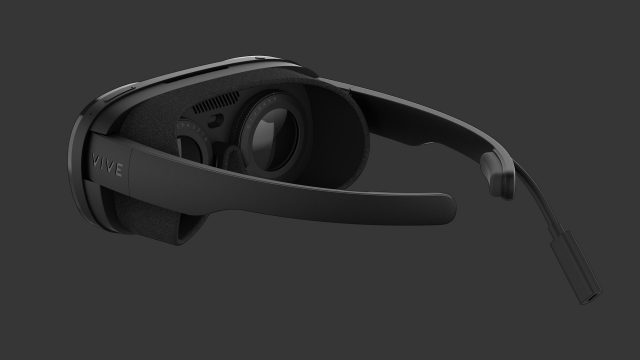HTC’s compact VR headset, Vive Flow, launched late last year targeting a different kind of VR user. The company says that feedback since launch has consistently been around two features, both of which it plans to address.
Vive Flow is a compact VR headset targeting casual VR users who want a portable headset for relaxation and productivity. Out of the gate the product got high marks for its diminutive size, but HTC says there were two common themes in the post-launch feedback: a lack of support for iPhone and two-handed input.
Speaking during this week’s AWE 2023, Vive China President Alvin Wang Graylin tells Road to VR that both points are in active development and the company expects to have details to share soon.
Vive Flow isn’t a fully standalone headset; it must be plugged into a smartphone for both battery and input. But not just any smartphone… only Android devices have been supported since launch. For the huge number of iPhone users out there, that makes the device a non-starter, even if Flow’s unique ‘causal’ approach to VR is appealing.
Graylin said Vive Flow support for iPhone is on the way, though it may not offer the full set of capabilities that are possible when used with Android.
A big part of Vive Flow’s appeal is being able to cast flat apps from your phone into the headset, making the headset a simple personal theater for watching content on Netflix, YouTube, and the like. But if we had to guess, we’d say this capability could be limited when the headset is used with an iOS device, given Apple’s more restrictive approach to interoperability.

As mentioned, Vive Flow also uses the attached phone for input—both as a laser pointer and touchscreen input. But the single-handed and 3DOF nature of the ‘phone-as-a-controller’ leaves something to be desired. Graylin said that some form of two-handed input is in the works.
Two-handed input would not only make users feel a bit more capable in the headset, but could also open up more possibilities for different apps to work on the headset without being reworked for a single controller modality.
There’s a good chance the two-handed input will come in the form of hand-tracking—which HTC has supported on other headsets previously—but it’s possible the company might also surprise us by adding some kind of controller accessory to the headset. However, given the headset’s intention as a simple and portable device, hand-tracking seems to make the most sense.
,
